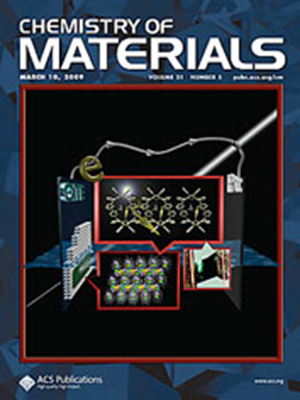Aminolysis of Highly Branched Poly(β-amino ester)s for Efficient mRNA Delivery
IF 7.2
2区 材料科学
Q2 CHEMISTRY, PHYSICAL
引用次数: 0
Abstract
mRNA therapy holds significant promise for preventing and treating diverse diseases. The development of safe and effective cationic polymers for mRNA delivery is essential for advancing its clinical applications. Highly branched poly(β-amino ester)s (HPAEs) are considered top nonviral candidates. However, current HPAEs have been synthesized exclusively using conventional “bottom–up” approaches, with optimization efforts primarily focusing on monomer combinations, topological structures, molecular weight, and chemical or physical modifications. Here, we report a “top–down” aminolysis strategy for synthesizing aminolyzed HPAEs (aHPAEs) with superior mRNA delivery efficiency. By intentionally increasing the feed ratio and reaction time, the end-capping amines can simultaneously end-cap the vinyl groups and aminolyze the ester groups of the HPAE base polymers, resulting in the generation of aHPAEs with reduced molecular weight and additional amide and amine groups. The degree of aminolysis significantly impacts both the molecular weight and the type and quantity of terminal groups in aHPAEs. Notably, aHPAE/mRNA polyplexes exhibit higher zeta potential, smaller particle size, and a 2.41-fold enhancement in mRNA transfection efficiency compared to their parent HPAE/mRNA polyplexes. Furthermore, the top-performing aHPAE, 122-2-S3, demonstrates targeted mRNA delivery to the spleen in vivo following systemic administration. The “top–down” aminolysis approach expands the HPAE family and, when integrated with the established “bottom–up” method, offers a pathway for developing more efficient HPAEs for mRNA delivery. This strategy may also be applicable in improving the performance of other cationic polymers.

求助全文
约1分钟内获得全文
求助全文
来源期刊

Chemistry of Materials
工程技术-材料科学:综合
CiteScore
14.10
自引率
5.80%
发文量
929
审稿时长
1.5 months
期刊介绍:
The journal Chemistry of Materials focuses on publishing original research at the intersection of materials science and chemistry. The studies published in the journal involve chemistry as a prominent component and explore topics such as the design, synthesis, characterization, processing, understanding, and application of functional or potentially functional materials. The journal covers various areas of interest, including inorganic and organic solid-state chemistry, nanomaterials, biomaterials, thin films and polymers, and composite/hybrid materials. The journal particularly seeks papers that highlight the creation or development of innovative materials with novel optical, electrical, magnetic, catalytic, or mechanical properties. It is essential that manuscripts on these topics have a primary focus on the chemistry of materials and represent a significant advancement compared to prior research. Before external reviews are sought, submitted manuscripts undergo a review process by a minimum of two editors to ensure their appropriateness for the journal and the presence of sufficient evidence of a significant advance that will be of broad interest to the materials chemistry community.
 求助内容:
求助内容: 应助结果提醒方式:
应助结果提醒方式:


